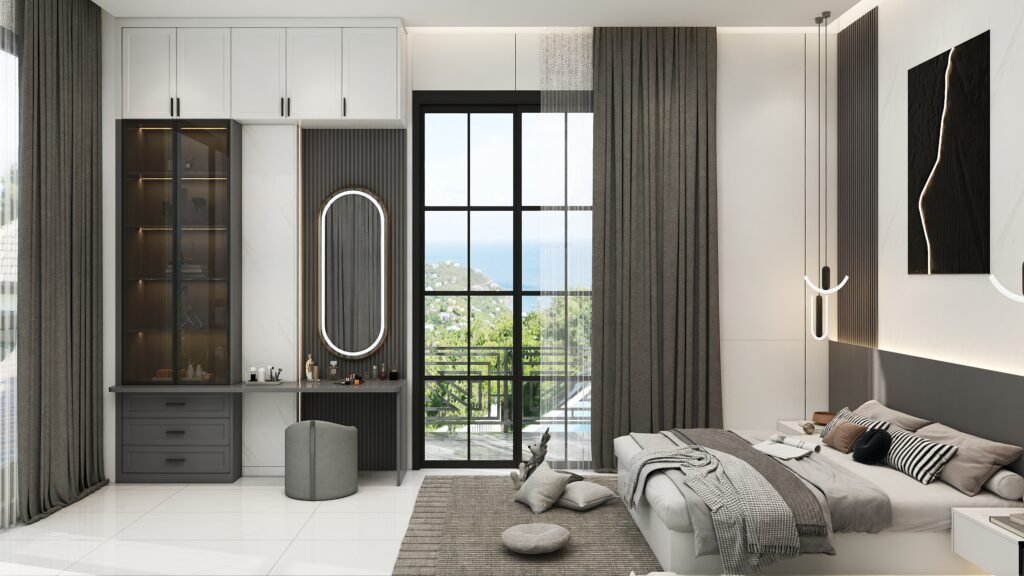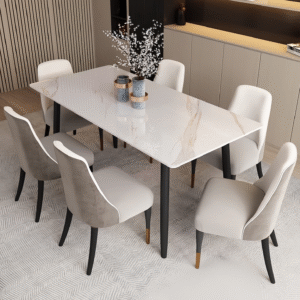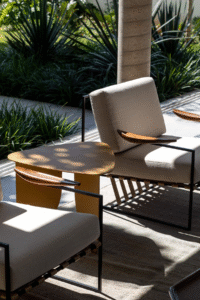When designing or decorating a living room, wall materials are an important factor to consider. Living room wall panels have become a popular choice due to their unique advantages, attracting many owners and designers. Today, Cs Home, as an expert in the production and manufacturing of wall panels, will give you a comprehensive introduction to the types, materials, installation methods and design concepts of living room wall panels to help you understand everything about living room wall panels.
What Are Living Room Wall Panels?
Living room wall panels are large sheets or boards used to cover the walls of a living room. They serve as an alternative to traditional paints and wallpapers, providing a seamless and often more economical way to protect and decorate living room walls. These panels can be made from various materials, each offering unique characteristics and advantages.

Types of Living Room Wall Panels
PVC Wall Panels:
- Material: Polyvinyl chloride (PVC)
- Features: Lightweight, waterproof, easy to install, and affordable
- Advantages: PVC wall panels are easy to clean and maintain, available in various colors and patterns, and can mimic the appearance of high-end materials. They are also resistant to mold and mildew, making them ideal for humid environments.
Acrylic Wall Panels:
- Material: Acrylic
- Features: Durable, glossy finish, stain-resistant
- Advantages: Acrylic wall panels offer a high-gloss, modern look, making the living room appear larger and more luxurious. They are easy to clean, resist staining, and can add a touch of sophistication to any space.
Laminate Wall Panels:
- Material: High-pressure laminate (HPL)
- Features: Strong, impact-resistant, available in various designs
- Advantages: Laminate panels are highly durable and offer a wide range of design options, including wood and stone effects. They are scratch-resistant, easy to maintain, and provide a practical solution for living room walls.
Composite Wall Panels:
- Material: Combination of materials, such as wood and plastic
- Features: Strong, moisture-resistant, versatile designs
- Advantages: Composite wall panels combine the best properties of various materials, offering durability, moisture resistance, and aesthetic appeal. They are suitable for different living room styles and can mimic natural materials like wood and stone.
Wood Wall Panels:
- Material: Solid wood or engineered wood
- Features: Natural, warm, high-end
- Advantages: Wood wall panels provide a natural and warm appearance, enhancing the elegance and comfort of the living room. They can add a sense of luxury and coziness, though they require regular maintenance and care to keep them looking their best.
Advantages of Living Room Wall Panels
1. Aesthetic Versatility:
Living room wall panels come in various colors, patterns, and textures, allowing you to customize the look of your living room to suit your style. Whether you prefer a modern, sleek appearance or a more traditional aesthetic, there are panel options to match your preferences. They can mimic the look of natural materials like wood, stone, or marble, offering a high-end look without the high-end cost.
2. Easy Installation:
Installing living room wall panels is usually quicker and easier than painting or wallpapering. Many panels feature tongue-and-groove fittings or adhesive backing, making them suitable for straightforward DIY installation and saving time and labor costs. This makes it an ideal choice for homeowners looking to refresh their space without a lengthy renovation process.
3. Low Maintenance:
Wall panels are easy to clean and require minimal maintenance. Simply wipe them down with a damp cloth to keep them looking pristine, avoiding issues like peeling paint and discolored wallpaper. This low-maintenance feature is particularly appealing for busy households.
4. High Durability:
Living room wall panels are typically made from high-quality materials, providing long-lasting durability and resistance to wear and tear. They are less likely to get scratched or damaged compared to traditional wall coverings.
5. Eco-Friendly Options:
Many wall panels are made from eco-friendly materials that are safe for the environment and your health, offering a sustainable choice. Recycled materials and low-VOC finishes make wall panels a greener option for environmentally conscious homeowners.
Installation Methods
1. Direct Adhesive Application:
One of the simplest methods of installing living room wall panels is using adhesive to attach the panels directly to the wall. This method is suitable for flat surfaces and can be done as a DIY project. It’s a quick and efficient way to update your living room without the need for professional installers.
2. Tongue-and-Groove Installation:
Some wall panels have tongue-and-groove fittings that allow them to interlock, ensuring a seamless fit and an aesthetically pleasing appearance. This method is particularly useful for creating a smooth and uniform look.
3. Using Batons or Furring Strips:
For uneven walls, batons or furring strips can be used to create a flat surface for panel installation. The panels are then attached to the batons, ensuring a smooth and even finish. This method is ideal for older homes where the walls may not be perfectly straight.
4. Screwing and Nailing:
In some cases, panels can be screwed or nailed directly into the wall or batons. This method provides a secure attachment but may require additional finishing to conceal the fasteners. It’s a reliable option for heavier panels that need extra support.
Design Ideas for Living Room Wall Panels
1. Modern Minimalism:
Use glossy acrylic panels in neutral tones like white, gray, or black to create a modern, minimalist living room. Pair with clean lines and modern furniture for a contemporary look. Add a few bold accents for a touch of color without overwhelming the space.
2. Natural Elegance:
Choose composite or laminate panels with wood or stone effects to bring a touch of nature into your living room. These panels can create a warm and inviting atmosphere, perfect for relaxation. Combine with earthy tones and natural fabrics for a cohesive design.
3. Bold Patterns:
Make a statement with bold, patterned panels that add visual interest to your living room. Whether it’s geometric designs, floral motifs, or abstract patterns, these panels can serve as a focal point in your décor. Use them on an accent wall to create a striking visual effect.
4. Classic Charm:
For a traditional look, consider laminate panels with classic designs or wainscoting effects. These panels provide the benefits of modern materials while adding timeless charm. Complement with traditional furniture and vintage accessories to complete the look.
5. Mixed Materials:
Try combining different types of wall panels, such as wood and glass, to create a unique mixed-material look. This design can add depth and personality to the space. Use contrasting textures and finishes to create a dynamic and interesting visual effect.
Conclusion
Living room wall panels offer a versatile, practical, and stylish solution for covering walls. With their aesthetic versatility, easy installation, low maintenance, and wide range of design options, wall panels are an excellent choice for any living room renovation or design project. Whether you prefer the sleek look of acrylic, the natural charm of composite materials, or the modern elegance of glass, there is a living room wall panel to suit your style. By understanding the different types of wall panels and their benefits, you can make an informed decision to enhance the functionality and aesthetics of your living room.
Moreover, the installation flexibility and durability of these panels make them a smart investment for any home. Whether you’re a DIY enthusiast or prefer to hire professionals, living room wall panels can transform your space quickly and efficiently. With so many options available, you’re sure to find the perfect wall panels that align with your design vision and practical needs. So, take the plunge and explore the world of living room wall panels to create a stunning, personalized space that you and your family will enjoy for years to come.
FAQs
Q1. What are living room wall panels?
A1:
Living room wall panels are large sheets used to cover walls, serving as an alternative to paint and wallpaper.
Q2. What are the common types of living room wall panels?
A2:
Types include PVC, acrylic, laminate, composite, and wood panels.
Q3. What are the installation methods for living room wall panels?
A3:
Methods include direct adhesive, tongue-and-groove, using batons or furring strips, and screwing or nailing.
Q4. What are the benefits of using living room wall panels?
A4:
Benefits include aesthetic variety, easy installation, low maintenance, high durability, and eco-friendliness.
Q5. How to choose the right design for living room wall panels?
A5:
Choose designs based on decor style, like modern minimalism, natural elegance, bold patterns, classic charm, or mixed materials.





